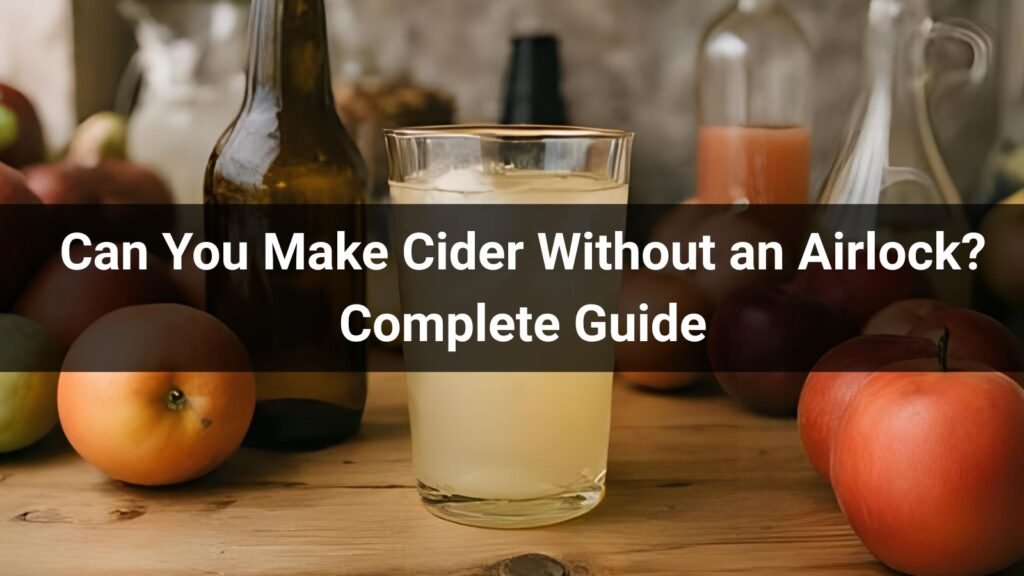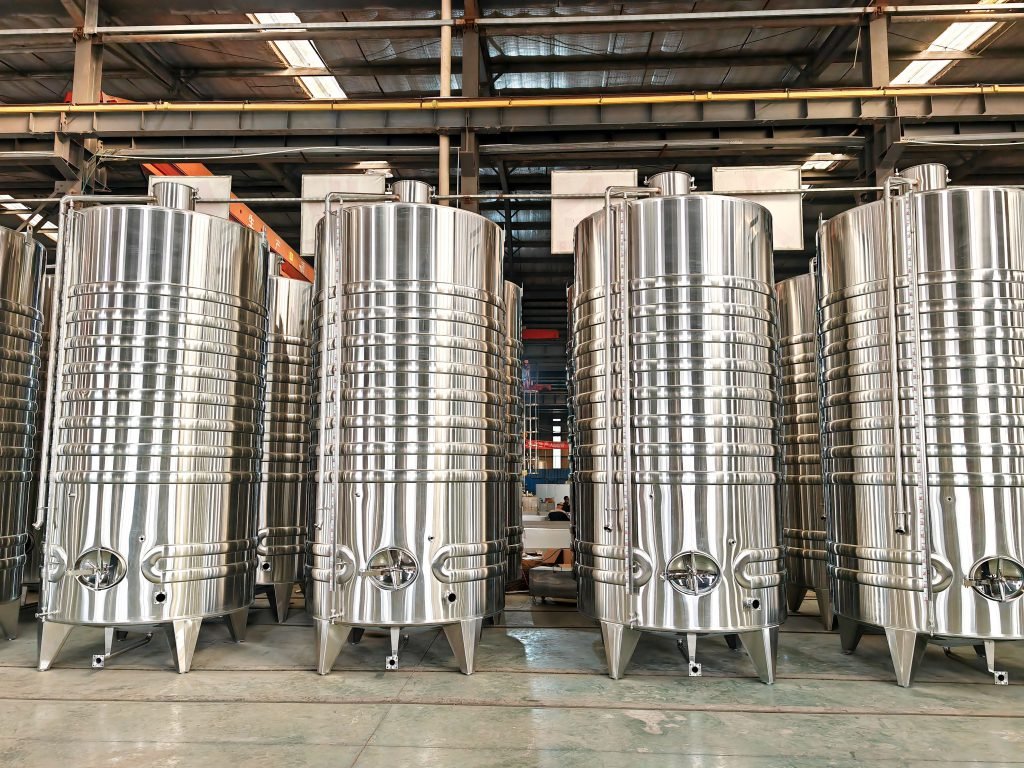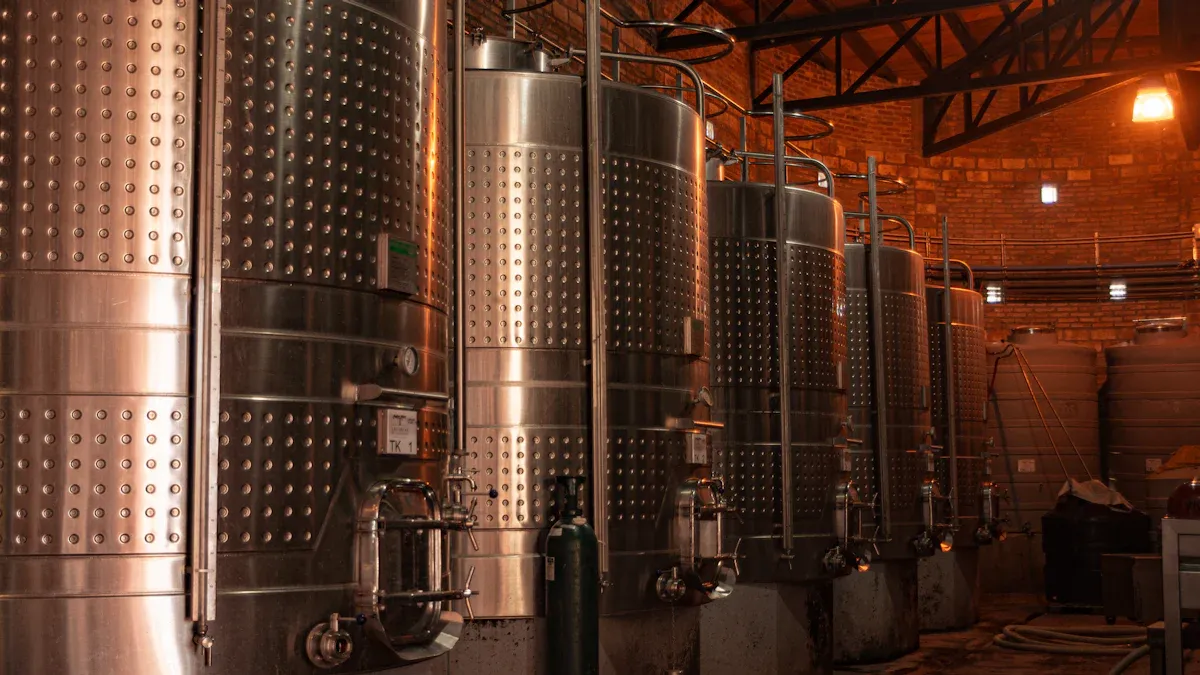
Making cider at home is an exciting journey that raises many questions about equipment and processes. While
airlocks are commonly used in fermentation, they’re not always essential for successful cider production.
This comprehensive guide explores alternative methods, gas requirements, and the brewing classification of
cider making, helping both beginners and experienced makers achieve excellent results with professional
equipment and techniques.
Table of Contents
- Understanding Cider Fermentation Fundamentals
- Making Cider Without an Airlock: Methods and Techniques
- Gas Requirements in Cider Fermentation
- Is Cider Making Considered Brewing?
- Do You Really Need an Airlock for Cider?
- Professional Equipment Solutions for Cider Production
- Safety and Quality Considerations
- Troubleshooting Common Fermentation Issues
Understanding Cider Fermentation Fundamentals
Cider fermentation is a complex biochemical process where yeasts convert sugars in apple juice into alcohol and
carbon dioxide. This ancient practice has evolved significantly, with modern techniques offering various
approaches to achieve consistent, high-quality results.
The fermentation process typically occurs in two stages: primary fermentation, where most sugar conversion
happens, and secondary fermentation, which clarifies and develops flavors. During primary fermentation, yeast
cells multiply rapidly, consuming sugars and producing alcohol, CO2, and various flavor compounds that define
your cider’s character.
| Fermentation Stage | Duration | Temperature Range | Key Activities |
|---|---|---|---|
| Primary Fermentation | 5-14 days | 60-75°F (15-24°C) | Rapid sugar conversion, CO2 production |
| Secondary Fermentation | 2-8 weeks | 55-65°F (13-18°C) | Clarification, flavor development |
| Conditioning | 2-6 months | 50-60°F (10-15°C) | Final maturation, carbonation |
Understanding these fundamentals helps determine when airlocks are beneficial versus when alternative methods
suffice. For those interested in apple
cider fermentation timelines and processes, proper equipment selection becomes crucial for consistent
results.
Making Cider Without an Airlock: Methods and Techniques
Yes, you can absolutely make cider without an airlock. Several traditional and modern methods
allow successful fermentation without this common piece of equipment. The key lies in understanding alternative
approaches that maintain proper fermentation conditions while preventing contamination.
The Loose Lid Method
One of the simplest approaches involves using a loosely fitted lid on your fermentation vessel. This allows CO2
to escape while minimizing oxygen exposure. Place the lid lightly on your container without sealing it
completely. The escaping CO2 creates a protective atmosphere that inhibits harmful bacteria growth.
Cloth Cover Technique
Traditional cider makers often used cloth covers secured with rubber bands or string. This method allows gas
exchange while filtering out contaminants. Use clean cheesecloth or brewing fabric, ensuring it remains taut and
secure throughout fermentation.
Open Fermentation Systems
Professional cider fermenter sometimes employ open fermentation, particularly during primary fermentation. This
technique requires careful monitoring and sterile conditions but can produce exceptional flavor complexity. The
vigorous early fermentation stage provides natural protection through active CO2 production.
When considering DIY cider fermenting
containers, these methods offer flexibility for various vessel types and sizes, from small home batches
to larger commercial operations.
Gas Requirements in Cider Fermentation
Understanding gas dynamics in cider fermentation is essential for successful production, whether using airlocks
or alternative methods. The primary gases involved are carbon dioxide (CO2) and oxygen (O2), each playing
distinct roles at different fermentation stages.
Carbon Dioxide Production and Management
CO2 is the most abundant gas produced during fermentation, generated as yeast metabolizes sugars. This gas serves
multiple purposes: it creates an anaerobic environment protecting against contamination, indicates active
fermentation, and can be retained for natural carbonation in the final product.
During peak fermentation, a 5-gallon batch can produce substantial CO2 volumes – enough to fill several balloons
daily. This natural gas production is why many fermentation methods work without airlocks; the continuous CO2
flow creates a protective barrier.
Oxygen’s Complex Role
Oxygen requirements vary significantly throughout the fermentation process. Initially, yeast needs small amounts
of oxygen for healthy cell division and enzyme production. However, once primary fermentation begins, oxygen
exposure should be minimized to prevent oxidation and off-flavors.
| Fermentation Phase | Oxygen Requirement | CO2 Production Rate | Management Strategy |
|---|---|---|---|
| Pre-fermentation | Moderate (5-10 ppm) | None | Gentle aeration during pitching |
| Early Primary | Low (1-3 ppm) | High | Allow controlled gas exchange |
| Late Primary | Minimal | Moderate | Protect from oxygen exposure |
| Secondary | None | Low to none | Complete anaerobic conditions |
Professional equipment designed for optimal cider fermentation
vessels incorporates gas management systems that automatically regulate these requirements throughout
the fermentation cycle.
Is Cider Making Considered Brewing?
Cider making is technically not brewing in the traditional sense, but rather a form of
winemaking. This distinction matters for understanding processes, regulations, and equipment
requirements. While both involve fermentation, the fundamental differences in raw materials and techniques
create separate categories.
Technical Classifications
Brewing specifically refers to the process of making beer from malted grains, involving mashing, boiling, and hop
additions. Cider making, conversely, ferments fruit juices directly without the grain conversion processes that
define brewing. This places cider making closer to winemaking in both technique and regulatory classification.
Process Similarities and Differences
Despite classification differences, cider making shares several processes with brewing: yeast selection,
fermentation management, temperature control, and clarification techniques. However, cider makers skip the
complex mashing and boiling stages required in beer production, making the process more straightforward in many
ways.
The fermentation vessels used in both industries are often interchangeable, which is why many manufacturers
produce equipment suitable for both applications. Understanding these relationships helps when selecting
appropriate cider tanks for cider
making equipment.
Regulatory Perspectives
Most regulatory bodies classify cider as a wine product rather than beer, affecting taxation, labeling
requirements, and production licenses. In the United States, cider falls under wine regulations when alcohol
content exceeds 7% ABV, while lower alcohol versions may be classified differently depending on the
jurisdiction.
Do You Really Need an Airlock for Cider?
The airlock question generates considerable debate among cider makers, with valid arguments on both sides. The
answer depends on your specific circumstances, goals, and risk tolerance. Let’s examine when airlocks are
beneficial versus when alternatives work equally well.
Situations Where Airlocks Provide Clear Benefits
Airlocks excel in certain scenarios: long-term fermentation (over 4 weeks), secondary fermentation stages,
environments with high contamination risk, and when precise pressure control is needed. They also provide
psychological comfort for new makers worried about contamination.
For commercial operations or serious home producers, airlocks offer consistency and peace of mind. They eliminate
guesswork about gas exchange and provide visual confirmation of fermentation activity through bubble counting.
When Alternatives Work Just as Well
Short primary fermentations, vigorous yeast strains, controlled environments, and experienced makers can often
achieve excellent results without airlocks. Traditional methods have produced quality cider for centuries,
proving that airlocks, while helpful, aren’t absolutely essential.
The decision often comes down to personal preference and specific circumstances. Many successful commercial
operations use stainless steel cider
tanks with sophisticated pressure relief systems that function similarly to airlocks but offer
additional benefits.
Risk Assessment Factors
Consider these factors when deciding: ambient temperature stability, seasonal contamination risks (higher in warm
weather), batch size (larger batches more forgiving), and your experience level. Beginners might prefer airlocks
for their forgiving nature, while experienced makers may comfortable with traditional methods.
Professional Equipment Solutions for Cider Production
Modern cider production benefits from advanced equipment designed specifically for fruit wine fermentation.
Professional systems integrate gas management, temperature control, and contamination prevention into
comprehensive solutions that surpass simple airlocks in functionality and reliability.
Advanced Fermentation Vessel Design
Contemporary fermentation vessels incorporate multiple gas management strategies: built-in pressure relief
valves, sample ports with CO2 purging capabilities, and variable capacity systems that minimize headspace oxygen
exposure. These features address the same concerns as airlocks while providing additional functionality.
Professional-grade systems often include integrated cooling jackets for precise temperature control, conical
bottoms for easy lees removal, and sanitary fittings that maintain sterile conditions throughout the process.
These features significantly impact final product quality and consistency.
Scalability Considerations
Equipment selection should consider both current needs and future growth. Modular systems allow capacity
expansion without complete replacement, while standardized fittings ensure compatibility across different vessel
sizes. This approach provides flexibility for growing operations.
| Production Scale | Typical Vessel Size | Key Features | Investment Range |
|---|---|---|---|
| Home/Hobby | 5-50 gallons | Basic pressure relief, portability | $200-$2,000 |
| Small Commercial | 100-500 gallons | Temperature control, sample ports | $5,000-$25,000 |
| Medium Commercial | 1,000-5,000 gallons | Automation, CIP systems | $25,000-$100,000 |
| Large Commercial | 10,000+ gallons | Full automation, data logging | $100,000+ |
When evaluating equipment options, consider partnering with experienced manufacturers who understand
cider-specific requirements. Companies specializing in making hard cider with professional
fermenters can provide valuable guidance on equipment selection and process optimization.
Quality Assurance Integration
Modern equipment often includes built-in quality assurance features: automated sampling systems, integrated
testing ports, and data logging capabilities that track critical parameters throughout fermentation. These
features help maintain consistency and identify issues before they affect final product quality.
Safety and Quality Considerations
Whether using airlocks or alternative methods, safety and quality must remain paramount. Understanding potential
risks and implementing appropriate safeguards ensures both personal safety and product integrity throughout the
fermentation process.
Contamination Prevention Strategies
Contamination represents the primary risk in airlock-free fermentation. Implement multiple prevention layers:
rigorous sanitation protocols, environmental controls, rapid pH reduction through proper acidification, and
monitoring systems that detect problems early.
Establish clear procedures for equipment cleaning and sanitization, ingredient handling, and environmental
management. Document these procedures and train all personnel to ensure consistent implementation across all
production activities.
Monitoring Critical Parameters
Regular monitoring becomes more critical without airlocks. Track specific gravity, pH levels, temperature
stability, and visual indicators of healthy fermentation. Establish acceptable ranges for each parameter and
intervention protocols when values exceed limits.
Implement sampling schedules that provide adequate oversight without compromising sterility. Use proper sampling
techniques and equipment to minimize contamination risks during testing procedures.
Emergency Response Procedures
Develop clear protocols for addressing fermentation problems: stuck fermentation, contamination indicators,
off-odors, or unusual visual changes. Having predetermined responses reduces panic-driven decisions that might
worsen problems.
Professional operations often benefit from commercial cider fermenters that
include built-in monitoring and alarm systems, providing early warning of potential issues before they become
serious problems.
Troubleshooting Common Fermentation Issues

Fermentation without airlocks can present unique challenges. Understanding common problems and their solutions
helps maintain production quality and prevents costly losses. Most issues have straightforward remedies when
caught early and addressed properly.
Sluggish or Stuck Fermentation
Sluggish fermentation often results from temperature issues, nutrient deficiencies, or inadequate yeast
populations. Check fermentation temperature and adjust if necessary, test for nitrogen availability and
supplement if needed, and consider yeast rehydration or additional pitching if populations appear insufficient.
Monitor specific gravity changes over time to distinguish between slow but active fermentation and truly stuck
conditions. True stuck fermentation requires more aggressive intervention, including possible yeast strain
changes or complete restart procedures.
Off-Flavors and Contamination
Off-flavors can develop from various sources: bacterial contamination, wild yeast activity, oxidation, or
temperature fluctuations. Identify the source through sensory evaluation and analytical testing, then implement
corrective measures based on the specific problem identified.
Prevention remains more effective than correction. Maintain strict sanitation protocols, control fermentation
environment carefully, and monitor critical parameters consistently to prevent problems before they develop.
Gas Management Problems
Without airlocks, gas management requires more attention. Excessive pressure buildup can damage containers or
create safety hazards, while insufficient CO2 protection may allow contamination. Monitor gas production rates
and adjust relief mechanisms accordingly.
| Problem Indicator | Likely Cause | Immediate Action | Prevention Strategy |
|---|---|---|---|
| Container bulging | Excessive pressure | Release pressure immediately | Improve gas relief system |
| Surface film formation | Oxygen exposure | Increase CO2 protection | Better gas exchange management |
| Unusual odors | Contamination | Isolate and test immediately | Enhanced sanitation protocols |
| No visible activity | Stuck fermentation | Check temperature and nutrients | Proper yeast handling procedures |
Quality Recovery Techniques
When problems occur, quick action can often salvage batches that might otherwise be lost. Implement triage
procedures that assess damage severity, determine recovery feasibility, and execute appropriate remediation
strategies based on specific problems identified.
Professional guidance becomes valuable during problem situations. Experienced equipment suppliers like those
providing cider fermenters for home
brewing success often offer technical support and troubleshooting assistance that can prevent costly
losses.
Conclusion and Professional Recommendations
Successfully making cider without airlocks is entirely achievable with proper knowledge, appropriate techniques,
and quality equipment. The key lies in understanding fermentation fundamentals, implementing effective gas
management strategies, and maintaining rigorous quality controls throughout the process.
Whether choosing traditional methods or modern alternatives, success depends on consistent application of proven
principles: proper sanitation, environmental control, and careful monitoring. Professional equipment designed
specifically for cider production can significantly improve results while reducing risks associated with
improvised solutions.
For those seeking to upgrade their cider production capabilities, CHENMA offers comprehensive
equipment solutions designed specifically for fruit wine fermentation. Our stainless steel fermentation systems
incorporate advanced gas management, temperature control, and quality assurance features that surpass
traditional airlocks in both functionality and reliability.
Our experienced technical team provides ongoing support throughout your cider-making journey, from initial
equipment selection through process optimization and troubleshooting. Contact CHENMA today to discuss how our
professional fermentation systems can enhance your cider production quality and consistency.
Ready to elevate your cider production? Contact CHENMA’s fermentation specialists for
personalized equipment recommendations and technical support. Our team understands the unique challenges of
cider fermentation and can help you achieve consistently excellent results.
Email: info@chenma.com | Phone: +86-531-58780867 |
Website: www.sdchenma.com



